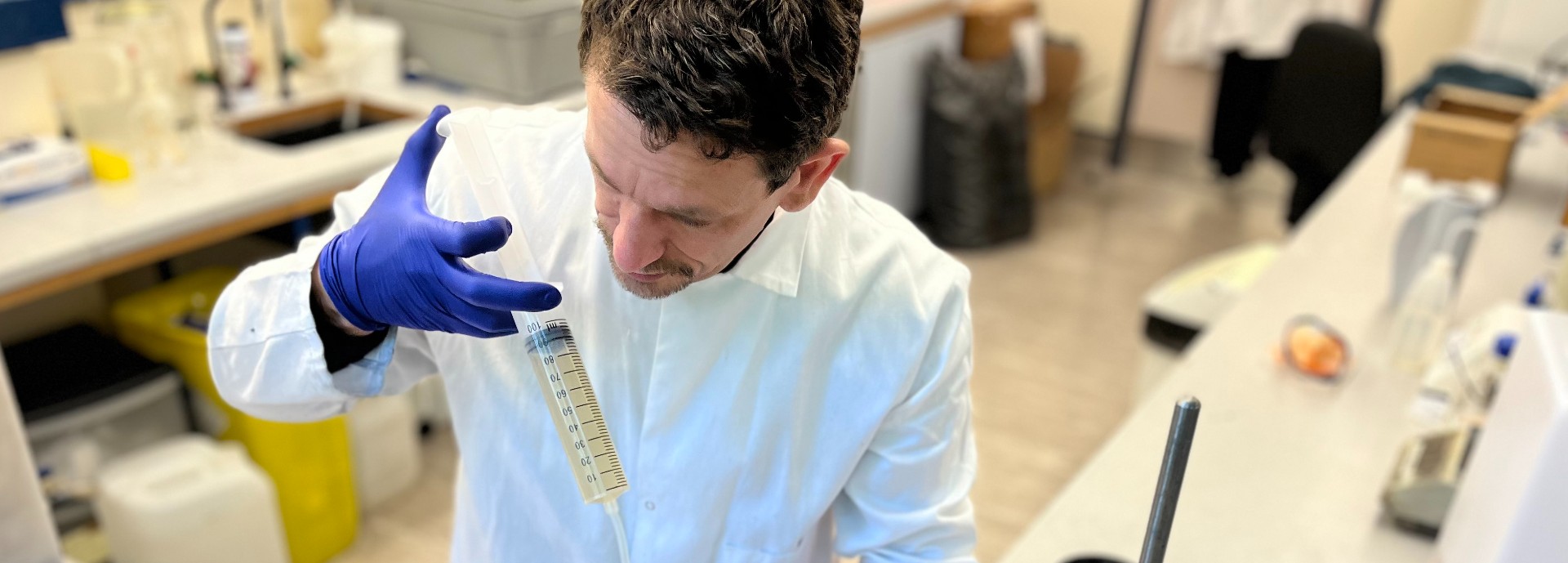An experiment given the green light by University of Stirling experts could halve emissions from wastewater treatment facilities.
The project funded by the Hydro Nation Chair – a research and innovation programme hosted by the University of Stirling – sees scientists at The James Hutton Institute in Aberdeen collect urine to help advance a wastewater treatment technology using power-producing common microbes.
Every day in the UK, more than 11 billion litres of wastewater is treated at about 9,000 sewage treatment facilities, many of which use energy intensive processes that emit greenhouse gas emissions, including methane and nitrous oxide.
But by putting the microbes used to munch through wastewater contaminants into an electrical circuit, Hutton researchers have shown that those greenhouse emissions could be halved, while also producing some power.

When funding this project, we were encouraged by the potential impact on offer from the dual stages and significant nitrous-oxide mitigation that could be possible.
This research could be especially beneficial in rural areas, where achieving the same 50% cut in greenhouse gas emissions would otherwise require significant investment in more energy intensive processes, but also in cities, where it could have energy saving benefits.
Dr Xavier Alexis Walter, the senior researcher leading the project at the Hutton, said: “An estimated 1-3% of the UK’s electricity production is used in wastewater treatment, mostly in cities where the wastewater has to be aerated.
“We could potentially decrease this consumption significantly by using the natural electro-chemical capability of microbes to self-power the process. In large cities, where urban farming is becoming more popular – and necessary – we could replace more energy intensive treatment processes and also tweak the process to draw off nitrogen that can be used as fertiliser.”
Dr Walter’s experiments, focusing on wastewater treatment, require about 3.3 litres of urine per day (an average well hydrated person passes around 2.2 litres over 24 hours), so a urinal was installed at the Hutton to collect samples from staff.
A form of the technology has already been trialled to power lighting in a toilet block at an isolated school in Africa, after being successfully trialled over several years at Glastonbury Music Festival, using festival goers’ urine.
Dr Walter’s latest work which showed the process could reduce greenhouse gas emissions by 50%, was funded through the Hydro Nation Chair Catalyst Fund.
The Catalyst Fund provides valuable pump priming funds to develop proof of concepts, trial and test technology solutions and leverage new funding to deliver next generation solutions to support Scottish Water’s ambitions to realise Net Zero by 2024.
Professor Andrew Tyler FRSE, Scotland Hydro Nation Chair at the University of Stirling, said: “As one of our first Hydro Nation Chair Catalyst Funded projects, following our Crucible on Process Emissions, we are excited by the research being delivered by Dr Walter.
“When funding this project, we were encouraged by the potential impact on offer from the dual stages and significant nitrous-oxide mitigation that could be possible. We are delighted that Dr Walter’s ambitions are being realised.”
Dr Walter’s research was a collaboration with the University of Glasgow and Scottish Water. The Hydro Nation Chair programme is funded by Scottish Water.

